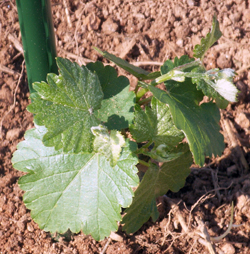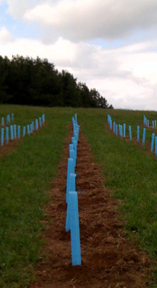I remember my first WSET class. The first thing our instructor told us was that to make wine, there are three entities that will affect the wine in the bottle. The first was the vineyard, the second the winemaker and the third the government. I’ve gained a bit of experience in the vineyard, helping Tin Lizzie Wineworks plant an experimental vineyard. I also have a few vines in the backyard. I’ve made wine from kits, a mead from scratch and now have a barrel of Cabernet Sauvignon at a Virginia winery and another barrel of Cab at a Maryland winery. However, I haven’t experienced government in action. So I decided to attend a Department of Planning and Zoning meeting for Howard County, Maryland.
The Planning Board meeting began just a few minutes late with a report. About twenty people in the audience listened to the presentation with some degree of interest, although the first presentation had nothing to do with vineyards or wineries. The second agenda item looked at zoning for wind machines. This item was of interest especially since many wineries have some sort of green initiatives. Several of the Mendocino wineries visited are purchasing energy created by wind machines.
Then an hour and a half later, came the zoning petition that dealt with wineries. Of note, Howard County, Maryland has some of the most restrictive laws in the nation regarding the building of a winery. We don’t have a winery with a tasting room. Hopefully the petition ZRA-130 can change that.
Basically the proposal defines “Farm Winery class 1” and “Farm Winery class 2” and what would be permitted by each. The number of visitors to each class of winery, at any one time, are defining factors. Conditional use and accessory use were discussed. It was mentioned that neighboring counties treat wineries as agricultural entities. The board members seem perplexed. The language of the petition is not easily understood.
Then came the public discussion and two dissenting speakers voiced a number of opinions. One worry was that kids playing in the street when people who attended a tasting and drank too much walked or drove by. This is a concern, not a fact. It was pointed out later that there are parties at residences where people leave drunk and pass kids in the street. That statement was a fact. It was also noted that wineries may not serve anyone suspected of being inebriated. In Maryland, tasting room staffs have to be trained to know when not to serve someone.
Another concern is that a farm winery is a commercial enterprise and will be right next to neighborhoods. Again, this concern was opinion and not fact. This borders on the debate of whether a winery is an agricultural entity or not. About the only point of this concern that I believe warrants any thought is the roadway to the winery.
There was concern about enforcing the number of people the proposal permits. The petition limited the number of events to 15 per year. The opponents voiced that events would be held outside during the months from May through October and in reality this is 15 events in a six-month period. Again their concern is based on opinion and not fact. Other speakers as well as board members shot this down citing winery events that they have attended between the months of November through April.
Then the opponents tried to convince the planning and zoning board that there would be 500 people with 250 cars attending jazz events. Again this was presented as a fact when in reality it is an opinion.
The discussion continued with information presented by the supporters. Several indicated that the present language in the petition is still too restrictive. Others pointed out that the current language of operating hours from 9:00 am to 5:00 pm would not allow winemakers or vineyard workers to work at any other times then between those hours.
So the board discussed and passed the petition with their recommendations. Basically they are going to have to define the access road and change some of the language to define the hours the winery can be open to the public rather than operating hours.
It next will go on to the county council. Will this help to create wineries in Howard County or is it so restrictive that people who have the passion for wineries and vineyards will look 30 miles to Loudon County, Virginia where wineries are welcome and encouraged?





Drink Local Wine Conference Session Axes Cabernet Sauvignon
This year’s Drink Local Wine Conference was held in Lansdowne, Virginia. One of the surprises came in a session that discussed the grapes that grow well in Virginia. The three winemakers on the panel all axed Cabernet Sauvignon. It wasn’t due to the fact that Cabernet Sauvignon can grow in Virginia. It was due to the fact that the grape can’t compete with the quality and quantity of Cabernet Sauvignon grown elsewhere. The Virginia terroir will in some years produce very nice Cabs while other years produce average Cabs.
I did manage to raise a few eyebrows when I talked about the Cab I’m making at Vint Hill Craft Winery in Virginia. Afterall this is a drink local wine gathering, and I used Cabernet Sauvignon grapes sourced from California rather than Cab sourced from Virginia. However after the session on grapes there were no raised eyebrows regarding my sourcing Cab from California.
I had to make a decision long before harvest as to where to source grapes. Virginia Cab is as unpredictable as its weather around harvest time. California Cab is more predictable. So I decided on using California Cab. The cost to produce a barrel of wine is at the $30 per bottle point. I’m trying to make a wine comparable to a $60 bottle wine. There are few Virginia Cabs at this price point. It’s a matter of economics. If it cost me $30 a bottle to make, I want it to be worth more than $30.
Virginia as a state is beginning to show it wisdom in the wine business. To realize that the king of grapes is not the best fit for the state is an example of the state’s growing wine maturity.